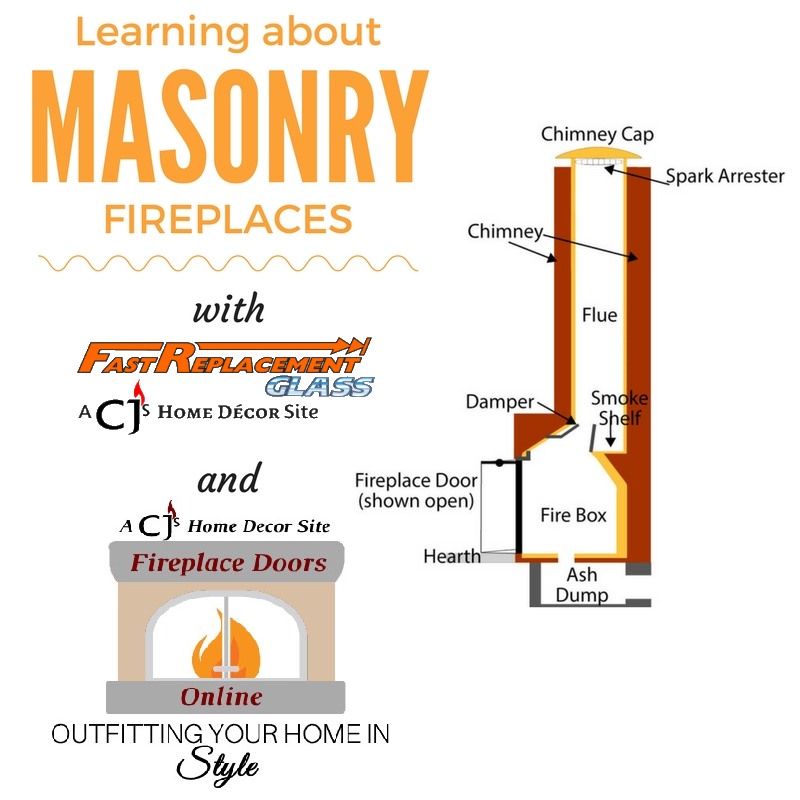Learning About Masonry Fireplaces
The parts of your Masonry fireplace explained!
 Have you ever wondered about the inner workings of your Masonry fireplace? What is a smoke shelf, and how does it help my fireplace? Do I really need a damper on my fireplace? We've teamed up with Fast Replacement Glass to go through and define all of the main parts of your Masonry fireplace.
Have you ever wondered about the inner workings of your Masonry fireplace? What is a smoke shelf, and how does it help my fireplace? Do I really need a damper on my fireplace? We've teamed up with Fast Replacement Glass to go through and define all of the main parts of your Masonry fireplace.
All definitions have been contributed by Jen at Fast Replacement Glass!
- Hearth. Constructed from fireproof materials, it extends beyond the fireplace as a stone ledge, or a tiled surface that is level with the floor.
- Facing, Fireplace Doors, & Mesh Screens. Also known as the decorative highlights of a fireplace. The facing serves to protect the wall around the firebox, in addition to being aesthetic and eye-catching. This surround can be part of or separate from a mantel (call for details). In addition, fireplace doors are a beautiful way to further protect your home and loved ones from the flames and hot coals. When closed, they also help keep cold air from entering the room when your fireplace is not in use. Some homeowners install mesh screens for yet another layer of protection so that they can enjoy the heat from a low burning fire while staying shielded from sparks.
- Firebox. This is the open area that you gaze upon in your living space, where the fire is produced, tended, and enjoyed. The firebox also plays a role in collecting the smoke generated from a wood burning fire so that it can be pushed up and out of your chimney.
- Ash Dump. In some models, an ash dump is built into the floor. This unit is essentially a trap door that allows the homeowner to store ashes for future disposal.
- Damper. This movable covering separates the firebox from the chimney. Its main purpose is to prevent cold air from entering the house during the times when a fire is not burning.
- Smoke Shelf. Located just above the damper, it deflects downdrafts and prevents things like soot and rain from entering the fireplace. The shelf ascends into the smoke chamber, which is the connection between the fireplace and flue.
- Flue. The pathway for smoke and gases to exit the fireplace. Some flues are made from stainless steel or baked clay.
- Chimney. This is the surround for the flue. It keeps heat generated by the fire from reaching any building materials that may be flammable. Some chimneys have their own damper, which is cable-operated by the homeowner. When closed, the chimney damper stops downdrafts.
- Spark Arrester. Metal mesh that sits over the top of the flue. If any burning materials have found their way up through the flue with the exiting smoke and gases, the spark arrester prevents this burning debris from landing on the roof and causing a fire.
- Chimney Cap. Usually constructed from stainless steel, this covering prevents moisture and wind gusts from entering the flue. It is also a useful deterrent for birds and other animals.
No posts found



